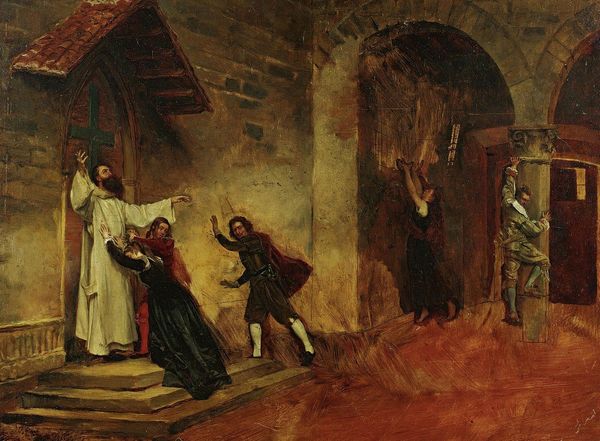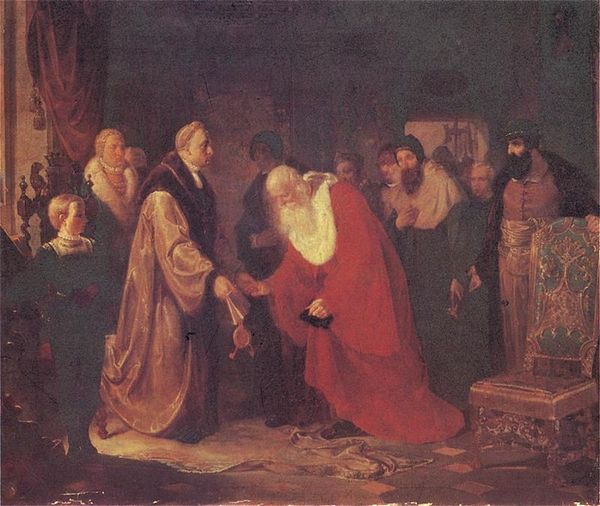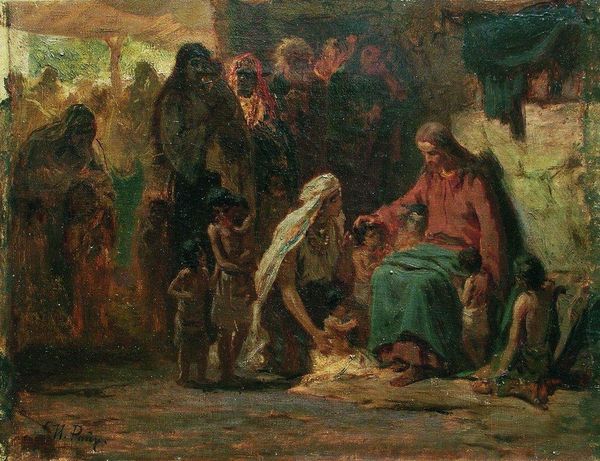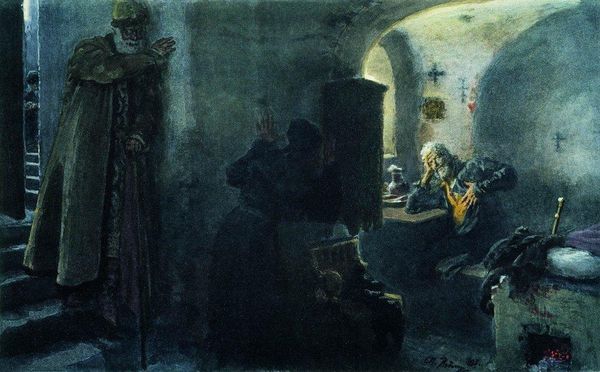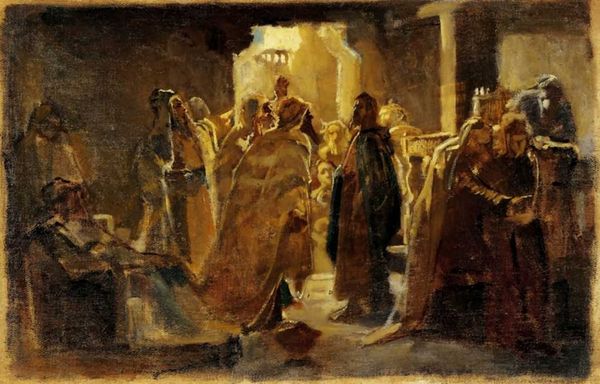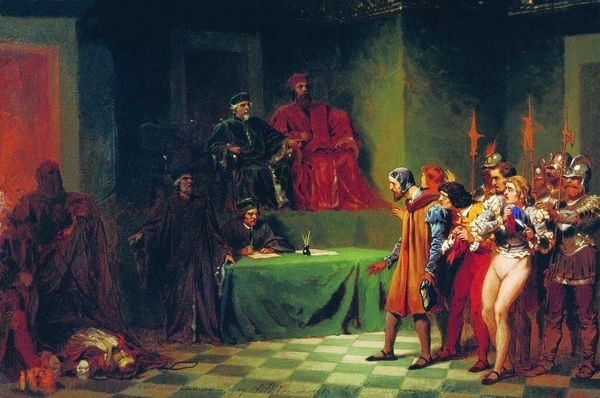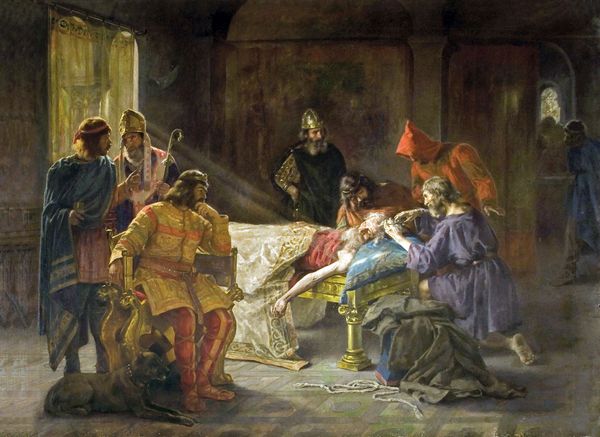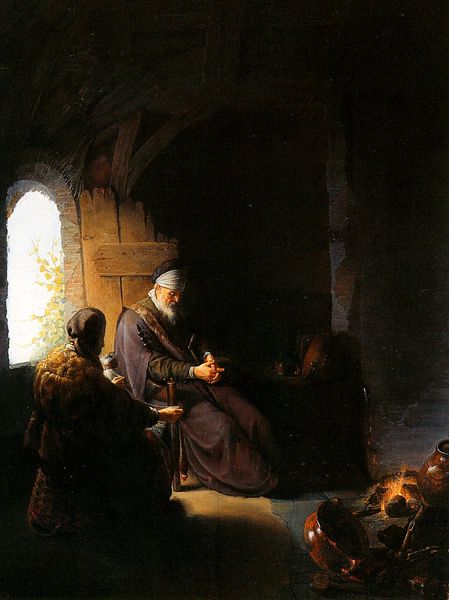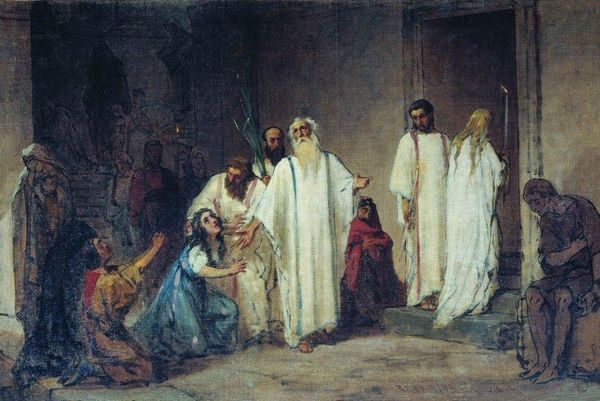
Boris Godunov with Ivan the Terrible 1890
0:00
0:00
ilyaefimovichrepin
Tver Regional Art Gallery, Tver, Russia
painting, oil-paint
#
portrait
#
painting
#
oil-paint
#
oil painting
#
russian-avant-garde
#
genre-painting
#
history-painting
#
academic-art
#
fine art portrait
#
expressionist
#
realism
Dimensions: 50.5 x 168 cm
Copyright: Public domain
Editor: We're looking at Ilya Repin's oil painting, "Boris Godunov with Ivan the Terrible" from 1890. There's a palpable sense of unease, almost paranoia, in this dimly lit scene. What can you tell us about its context and interpretation? Curator: The tension you sense is absolutely key. Repin's choice to depict this historical encounter is ripe for analysis. Consider the power dynamics at play: Ivan the Terrible, a figure synonymous with autocracy and violence, seated, observing, while Boris Godunov, a man who would later become Tsar amidst suspicion, stands before him. How might Repin be critiquing the nature of power and succession within Tsarist Russia itself, especially considering the sociopolitical turbulence of late 19th-century Russia? Editor: So, beyond the immediate historical narrative, you see it reflecting on the nature of power structures generally? Curator: Exactly. The historical context provides a lens through which we can examine broader issues of authority, legitimacy, and the cyclical nature of political anxieties. What does the painting suggest about how societies grapple with legacies of oppression, and the ways in which past traumas continue to haunt the present? Editor: That makes me look at the figures differently, noticing how isolated they seem even within a crowd. How much did Repin's personal politics influence this work? Curator: Repin was painting at a time of rising social consciousness and revolutionary fervor. Examining his broader body of work, we see a critical eye turned towards societal inequalities and the plight of the marginalized. This painting becomes not just a historical record but an implicit commentary on the burdens of leadership and the moral compromises often demanded by political power. Does recognizing that lens shift how we consider the narrative choices that he makes in depicting these figures? Editor: It definitely adds a layer of complexity to how I understand Repin’s goals for this painting, thinking about Russian society and its future rather than the past alone. Curator: Precisely. This is how art encourages us to look critically at the past and reflect on our own present.
Comments
No comments
Be the first to comment and join the conversation on the ultimate creative platform.
